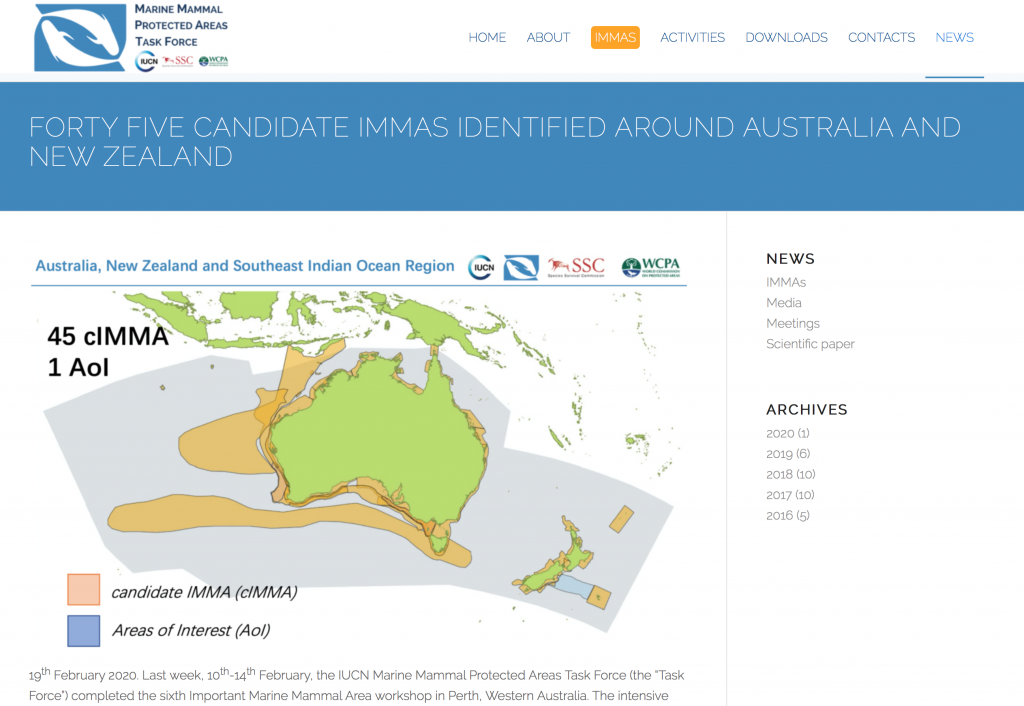25 February 2020. I’m just back from Perth, Australia, where our team worked with 30 experts to identify an impressive total of 45 candidate important marine mammal areas, or cIMMAs in the waters around Australia, New Zealand and the southeast Indian Ocean. Several of the cIMMAs extend well into offshore high seas, outside of the 200 nautical mile exclusive economic zone.
The areas nominated feature nearshore habitat for most of the world’s remaining dugong; rare Australian humpback and snubfin dolphins, only recently recognized as species; as well as deep canyons with vulnerable sperm, and endangered blue and pygmy blue whales.
Also living in Australia and covered by the cIMMA proposals are two species of bottlenose dolphins and the endangered Australian sea lion. New Zealand has the world’s only population of the endangered Hector’s dolphin as well as the subpopulation of Maui dolphin, and many rare beaked whale species.
The Perth workshop followed successful Task Force IMMA regional workshops in the Mediterranean, Pacific Islands, Northeast Indian Ocean-Southeast Asian Seas, Extended Southern Ocean, and Western Indian Ocean-Arabian Seas in 2016-2019.

Important Marine Mammal Areas—IMMAs—are defined as discrete portions of habitat, important to marine mammal species. These areas have the potential to be delineated and managed for conservation. They are not marine protected areas but layers that can be used in spatial planning or for other area-based management tools.

